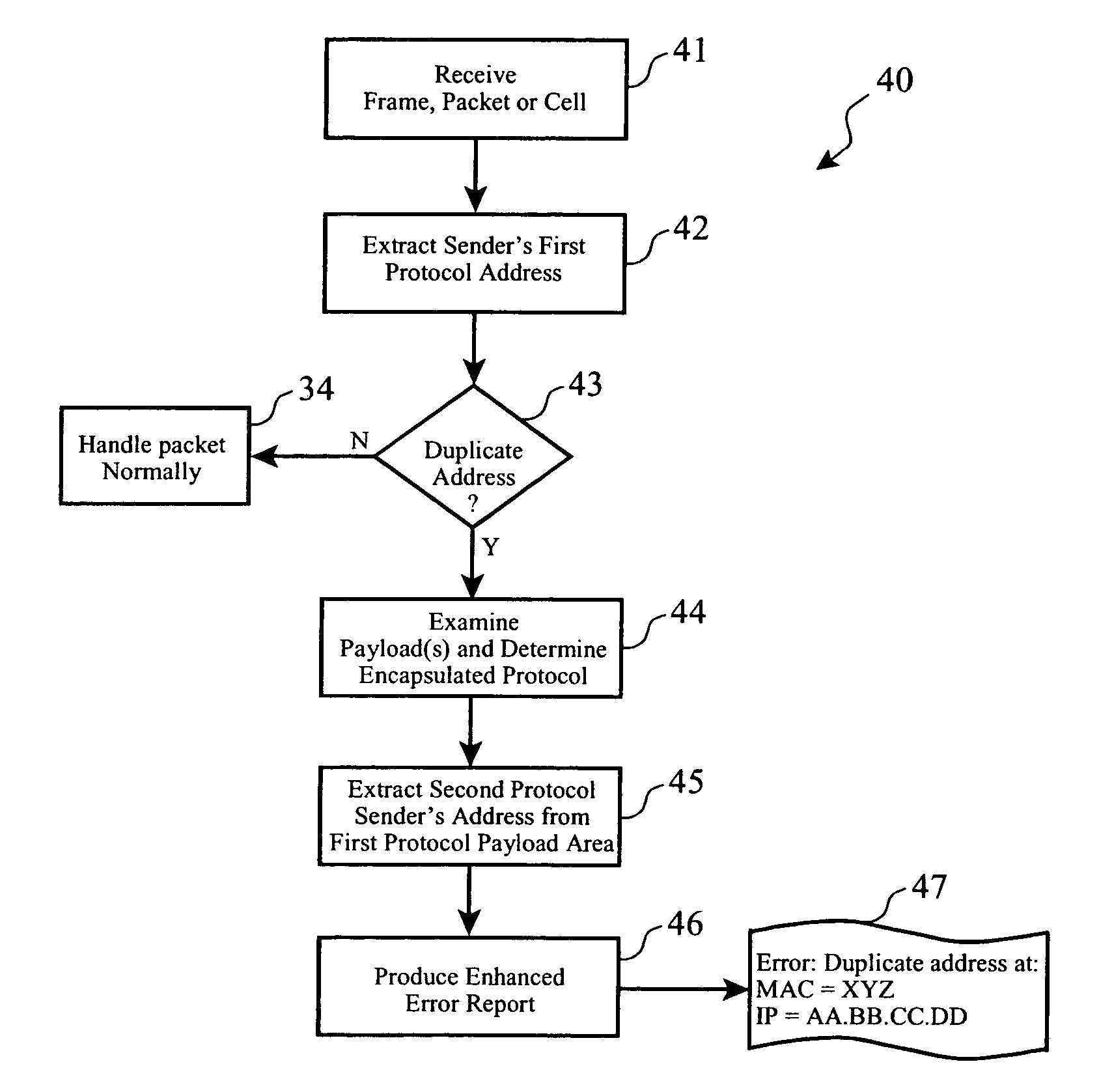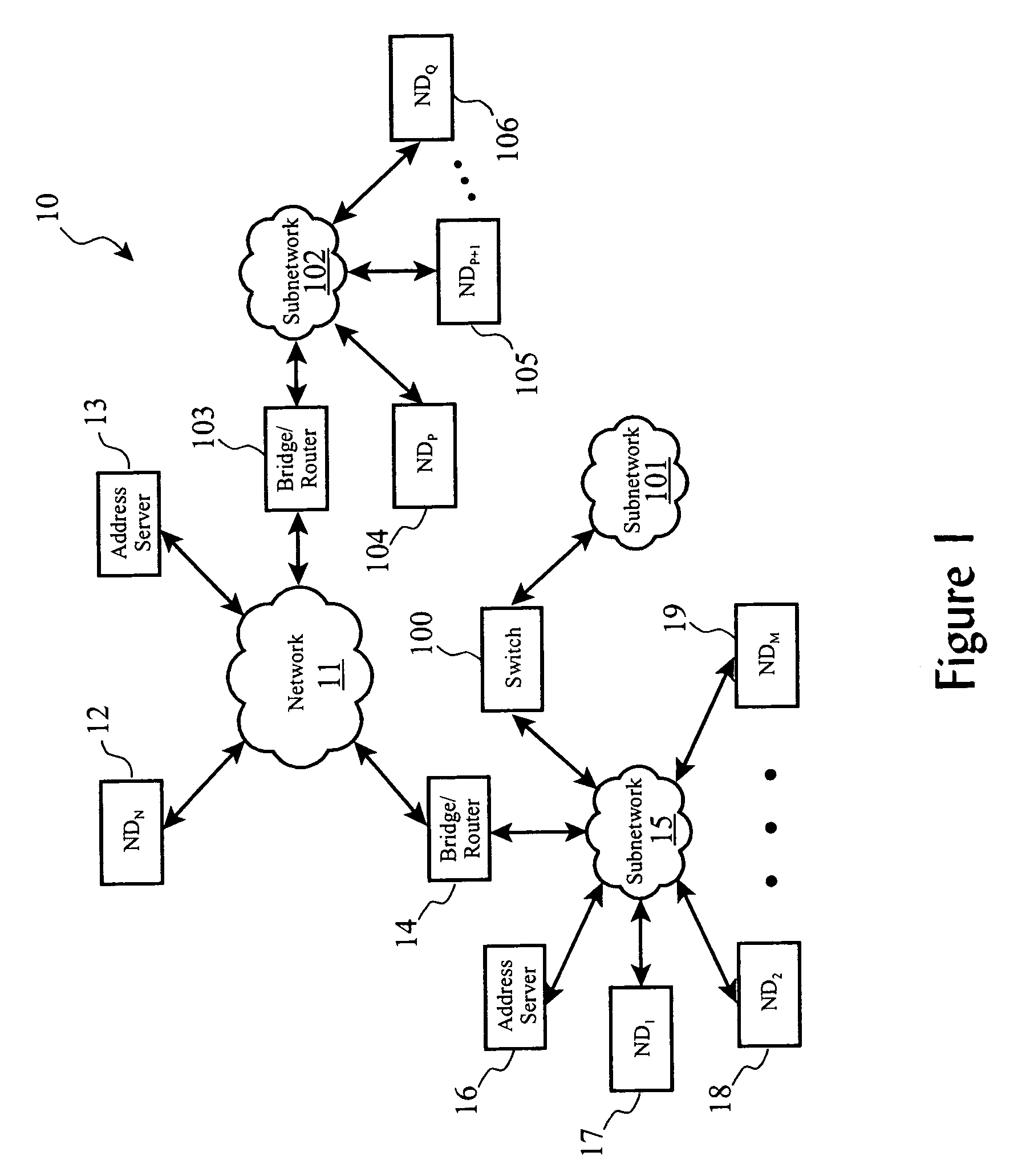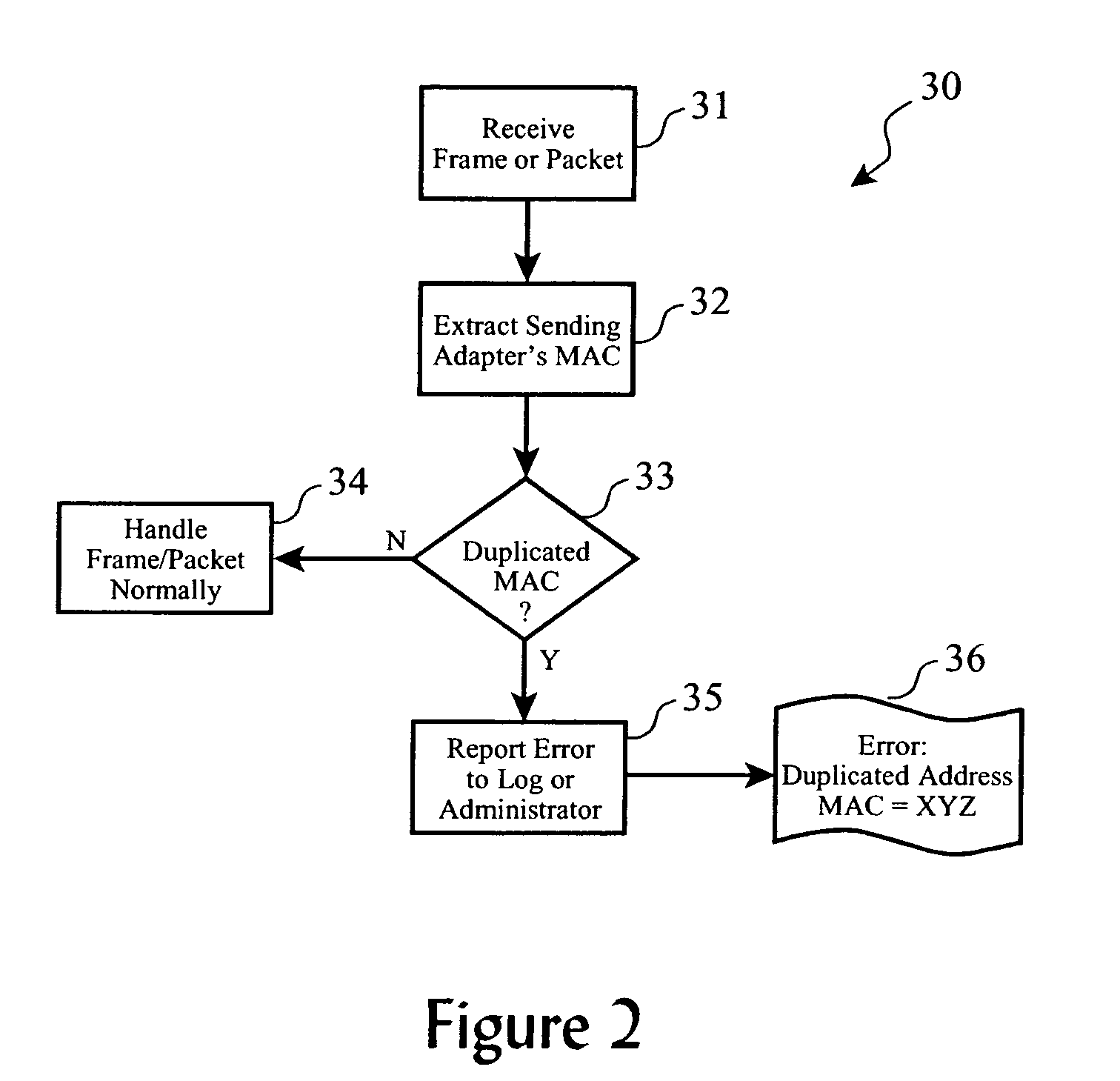Duplicate network address detection
a network address and detection technology, applied in the field of duplicate network address detection, can solve the problems of not giving any more detail data, and well known to perform poorly, and achieve the effect of improving the typical duplicate address detection logi
- Summary
- Abstract
- Description
- Claims
- Application Information
AI Technical Summary
Benefits of technology
Problems solved by technology
Method used
Image
Examples
Embodiment Construction
[0028]The present invention is preferably realized as a software-implemented process executed by a processor or embedded controller of a networked device, network adapter, or similar hardware circuit. We will refer to the full range of hardware devices which may host or execute such a process as a “platform”. As such, we first turn our attention to description of suitable computing platforms with which the present invention may be realized.
Suitable Computing Platforms
[0029]Turning to FIG. 2, a generalized architecture is presented including a central processing unit (81) (“CPU”), which is typically comprised of a microprocessor (82) associated with random access memory (“RAM”) (84) and read-only memory (“ROM”) (85). Often, the CPU (81) is also provided with cache memory (83) and programmable FlashROM (86). The interface (87) between the microprocessor (82) and the various types of CPU memory is often referred to as a “local bus”, but also may be a more generic or industry standard b...
PUM
 Login to View More
Login to View More Abstract
Description
Claims
Application Information
 Login to View More
Login to View More - R&D
- Intellectual Property
- Life Sciences
- Materials
- Tech Scout
- Unparalleled Data Quality
- Higher Quality Content
- 60% Fewer Hallucinations
Browse by: Latest US Patents, China's latest patents, Technical Efficacy Thesaurus, Application Domain, Technology Topic, Popular Technical Reports.
© 2025 PatSnap. All rights reserved.Legal|Privacy policy|Modern Slavery Act Transparency Statement|Sitemap|About US| Contact US: help@patsnap.com



